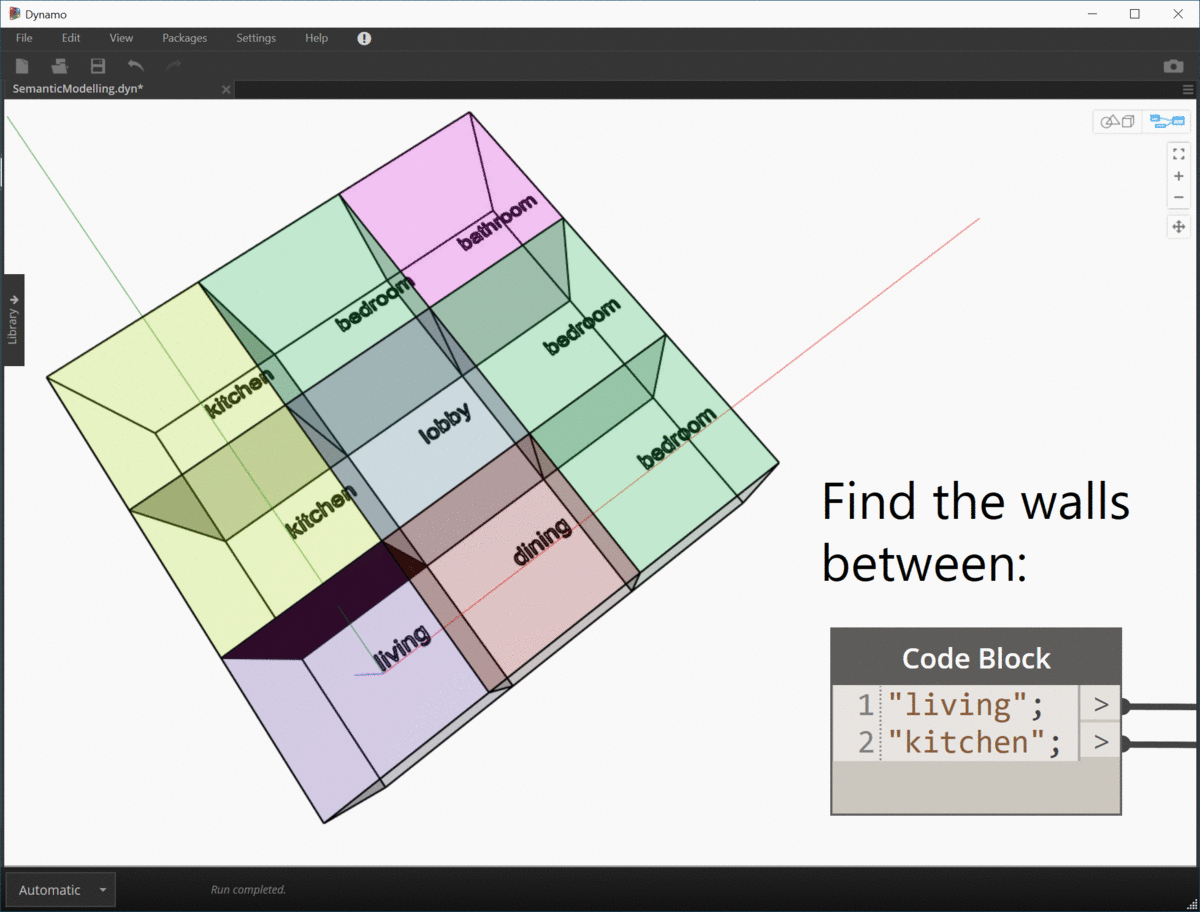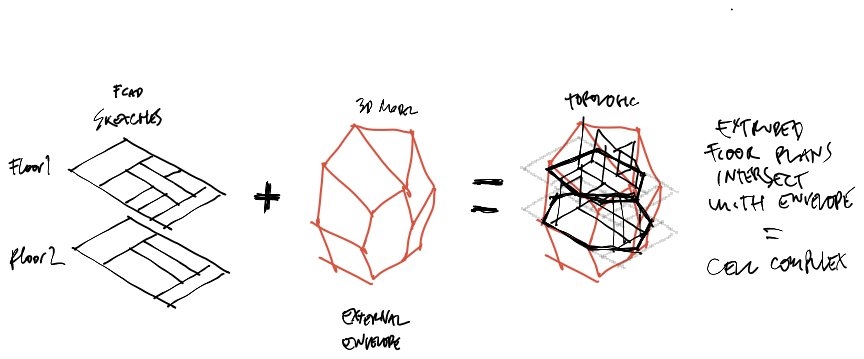@lukas said:
Then I need to know how I would implement the next dimension: the electrical power-supply-graph.
Would it just be a second instance of 'topologic' with an adapted behaviour (instead of geometry it would handle power ratings). Both topologic instances would run parallely and/or interact? what are the tools behind this topologic intelligence?
Hi Lukas,
I'm working with graphs as knowledge support based on key value dictionaries.
I can't wrap my head around the advantages of graph theory (yet) but the advantage of topologic is that when you add these dictionaries to the whole population of elements, you can after the fact, query the elements (in your case edges that have a certain value on a certain key) and extract a graph.
How I see it is, not only that the graphs are multidimensional but that several overlaid graphs can/could coexist in the same topological construct.
There is where I think the power resides.
Going back to my conceptual background, where I see the power is in that topologic allows/enables us to work on unfathomably complex knowledge structures.
I posit that Christopher Alexander abandoned computation in his research because he realized they couldn't cope yet with the complexity (A city is not a tree (it is a lattice/network) and resorting to "Patterns" that are indeed VERY high level of abstraction objects).
BUT NOW we have the computation power and the tool to deal with them.

